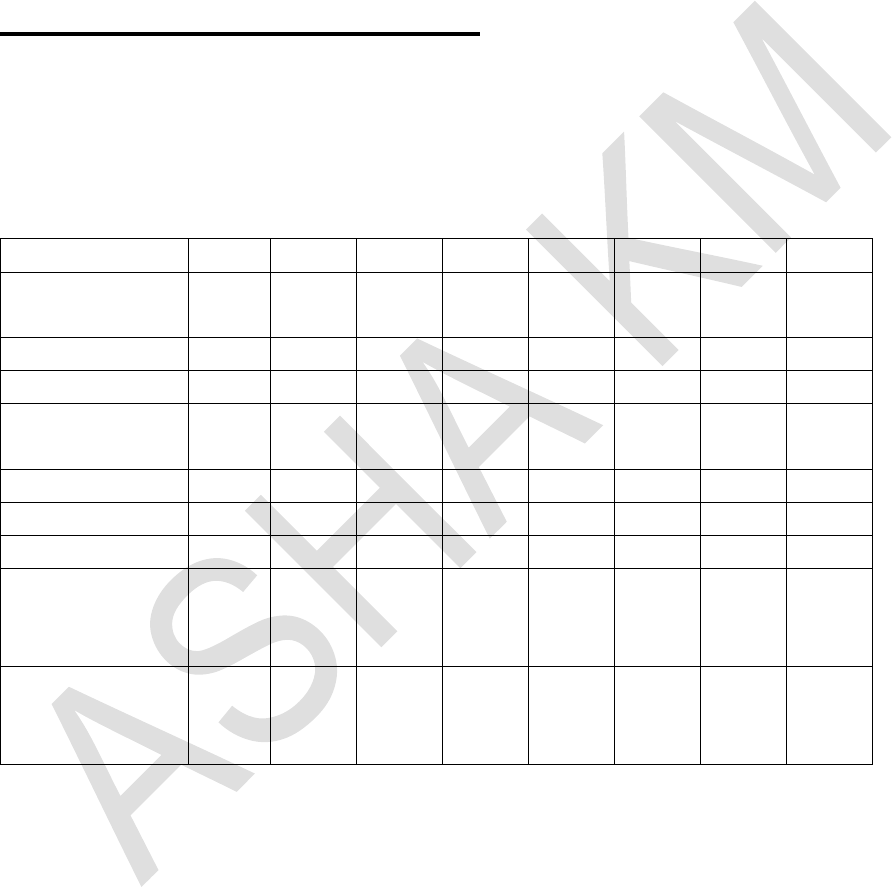
JOB EVALUATION
Meaning and Definition:
Job evaluation is a formal and systematic comparison of jobs in order to
determine the worth of one job relative to another, so that a wage or salary
hierarchy results.
The purpose of job evaluation is to determine the basic wage rates for different jobs.
Definitions of Job Evaluation.
According to Edwin B. Flippo‘Job Evaluation is a systematic and orderly process
of determining the worth of a job in relation to other jobs’.
Kimball and Kimball define job evaluation as “an effort to determine the
relative value of every job in a plant to determine what the fair basic wage for
such a job should be”.
Objective of Job Evaluation
1. To Analyse the Job Factors and Requirement
2. To Facilitate Comparison and Survey
3. To Eliminate Inequalities
4. Determination of Wage Structure
5. Objectivity and Rationality in Wage Structure
6. To Solve Wage Controversies of Job Evaluation
7. To Eliminate Personal Prejudices
8. To Adopt a Clear Plan for Wage and Salary Administration
9. Standardization of Wage and Salary Rate

Job Evaluation Methods
There are different methods that can be used for job evaluation. The easiest way to
split these up is to make a distinction between qualitative and quantitative methods.
1. Ranking System:
Under ranking system all the jobs are arranged or ranked in the order of their
importance from the simplest to the hardest, or in the reverse order, each
successive job being higher or lower than the previous one in the sequence.
Merits:
i) This method is simple and easy to understand and easy to explain to employees
(or a union).
ii) Ranking method is very economical and less time consuming.
iii) It involves little paper work.
Demerits:
i) It does not indicate the degree of difference between different jobs
ii) It involves subjective judgment, because a job is not analyzed and key factors
are not considered.
2. Job Classification (Or) Grading Method:
Under this system, a number of pre-determined grades or classifications are
established by a committee and then the various jobs are assigned within each grade
or class.
Grading or classification method involves the following five steps:
Qualitative
Quantitative
Job to job comparison
Ranking method/ pair
comparison ranking
Factor-comparison
method
Job to pre-determined
grade comparison
Job classification/ Grading
Method
Point-factor method

i) The preparation of job descriptions, which gives us basic job information
usually derived from job analysis.
ii) The preparation of job descriptions, so that different levels or grades of jobs
may be identified.
iii) Selection of grades and key jobs. About 10 to 20 jobs are selected, which
include all the major departments and functions and cover all the grades.
iv) Grading the key jobs. Key jobs are assigned to an appropriate grade level and
their relationship to each other studied.
v) Classification of all jobs. All the jobs in the same grade receive the same wage
or range of rates.
Merits:
i) This method is easy to understand and simple to operate
ii) It is more accurate and systematic than ranking method.
iii) It provides an opportunity to develop a systematic organization structure
iv) It is economical and suitable for small organizations also
v) Pay grades can be compared with those of other concerns. Grouping of jobs
into grades simplifies wage administration.
vi) This method is used in government offices.
Demerits:
i) It is very difficult to write accurate and precise descriptions of job grades.
ii) Some jobs may involve tasks which overlap more than one grade. It is very
difficult to classify such jobs in a particular grade.
iii) The system is rigid and personal judgment is involved in deciding job
classes and assigning jobs to specific classes.
3. Factors Comparison Method
This is a combination of both rating and point rating methods. It means
rates jobs by comparing them and makes analysis by breaking jobs into
compensable factors.
This system is usually used to evaluate white collar, professional and
managerial positions.
The mechanism for evaluating jobs under this method involves the

following steps.
1. Determine the compensable factors
2. Determine key jobs
3. Allocation present wages for key jobs
4. Place key jobs on a factor comparison chart
5. Evaluate other jobs
Merits
1. It is more objective method of job evaluation
2. The method is flexible as there is no upper limit on the rating.
3. It is fairly easy method to explain to employees.
4. The use of limited number of factors (usually five) ensures less
Chances of overlapping and over-weighting of factors.
5. It facilitates determining the relative worth of different jobs.
Demerits
1. It is expensive and time consuming method.
2. Using the same five factors for evaluating jobs may not always be
Appropriate because jobs differ across and within organization.
3. It is difficult to understand and operate.
4. The Points System:
This method is most widely used type of job evaluation plan. It requires
identifying a number of compensable factors (i.e. various characteristics of jobs)
and then determining degree to which each of these factors is present in the job.
Once the degree of each factor is determined, the corresponding number of
points of each factor are added and an overall point value is obtained. The sum of
these points gives us an index of the relative significance of jobs that are rated.
The procedure involved in point method is as follows:
i) Determine the job to be evaluated
ii) Select the factors (skill, efforts, responsibility, wage conditions etc) and sub-
factors (education, experience, quality of output etc).
iii) Define the factors.
iv) Determine the Degrees
v) Determine relative values of job factors

vi) Assign point values to degrees.
vii) Find point value of the job.
viii) Assign money values.
Merits:
i) Point method is most comprehensive and accurate
ii) Assignment of point scores and money value is consistent, it minimizes
bias and human judgment.
iii) Being the systematic method, workers of the organization favor this
method.
Demerits
1. It is both time-consuming and expensive method.
2. It is difficult to understand for an average worker.
3. a lot of clerical work is involved in recording rating scales.
4. It is not suitable for managerial jobs wherein the work content is not measurable
in quantitative terms.
Job Evaluation Committee
A job evaluation committee is group of individuals within the organization
,responsible to conducting job evaluation and determining the relative value or
worth of various jobs within the company.
Members of Job Evaluation Committee
1. HR professionals
2. Job Analysts
3. Subject matter experts
4. Compensation specialists
Responsibilities:
1. Job analysis
2. Selection of evaluation methods
3. Evaluation process
4. Documentation
5. Communication
5. Regular Review.
Factor Evaluation System
The Factor Evaluation System (FES) is the method most often used to assign grades

to nonsupervisory positions under the General Schedule.
FES includes nine factors common to most nonsupervisory positions in General
Schedule occupations.
The FES factors and their sub factors follow.
Factor 1 - Knowledge Required by the Position
• Kind or nature of knowledge and skills needed.
• How the knowledge and skills are used in doing the work.
Factor 2 - Supervisory Controls
• How the work is assigned.
• Employee's responsibility for carrying out the work.
• How the work is reviewed.
Factor 3 - Guidelines
• Nature of guidelines for performing the work.
• Judgment needed to apply the guidelines or develop new guides.
Factor 4 - Complexity
• Nature of the assignment.
• Difficulty in identifying what needs to be done.
Factor 5 - Scope and Effect
• Purpose of the work.
• Impact of the work product or service.
Factor 6 - Personal Contacts
• People and conditions/setting under which contacts are made.
Factor 7 - Purpose of Contacts
• Reasons for contacts in Factor 6.
Note: In some FES standards the point values for factors 6 and 7 are combined into
a matrix
Chart. The levels of each factor are described separately.

Factor 8 - Physical Demands
• Nature, frequency, and intensity of physical activity.
Factor 9 - Work Environment
• Risks and discomforts caused by physical surroundings and the safety precautions
Necessary to avoid accidents or discomfort.
Position Evaluation Statements
Position Evaluation Statement gives a detail description about the various factors
used to evaluate the job and different criteria’s used to evaluate the job in the
organization.
Factors
%
1
2
3
4
5
6
7
Knowledge
and skill
30
255
295
340
390
450
520
600
Responsibility
23
200
300
350
400
460
Complexity
15
170
195
225
260
300
Supervisory
Responsibility
10
0
50
90
150
175
200
Nature
2
20
25
30
35
40
Purpose
5
55
65
75
85
100
Coordination
9
90
135
155
180
Working
condition:
sensory
3
10
40
50
60
Working
conditions:
Environmental
3
10
40
50
60

